-
Posts
270 -
Joined
-
Last visited
Content Type
Profiles
Forums
Store
Help Articles
Posts posted by Baron d'Apcher
-
-
There are plenty of worthwhile cuts from the round though most of them lend themselves better to roasting than grilling. Consider tying roasts from the top round and knuckle and grilling them slowly as on a rotisserie. Marinate the beef in a cooked marinade of caramelized vegetable and reduced wine, then vinegar.
Bovine Myology is a good resource.
From the aitch bone:
Spider
Top sirloin:
Culotte
Mouse/heart of the top sirloin (the beginning of the tenderloin, very tender)
Top sirloin cut into pavés (remove silverskin)
Top Round:
Pear (pectineus; very tender)
Top round cap (gracilis, similar to skirt steak)
Adductor (on the side of the top round, more tender than the top round)
Top Round (best when barded with fatback or bacon and slowly roasted)
Outside Round:
Eye of round (marinate, roast slowly)
Silverside (grind)
Knuckle
Carrot/rat (cylindrical muscle under the knuckle used in pot au feu or pho. Simmer as you would a shank)
Knuckle (2 muscles can be easily separated and are very clean -the larger muscle can be opened and the silverskin removed, then tied back together)
Tri-tip (covers the knuckle, attached to the top sirloin.
Whiting (sartorius)
Shank
Beef shin. Braise/simmer.
-
Pressed ham.
Lightly smoked shanks, bourbon jelly and mustard sauce.
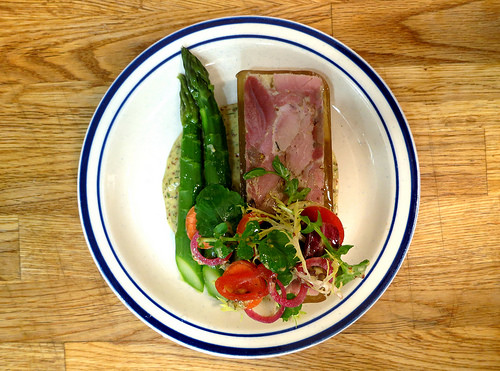
-
 5
5
-
-
Pickled herring. Austrian crescent fingerling potatoes, cress, little kale and mustard sauce.
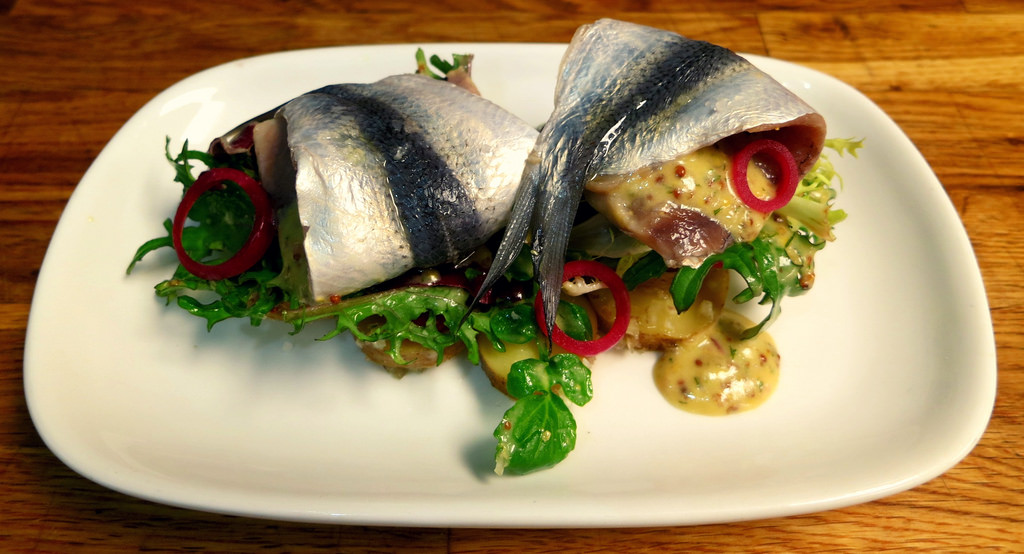
-
 2
2
-
-
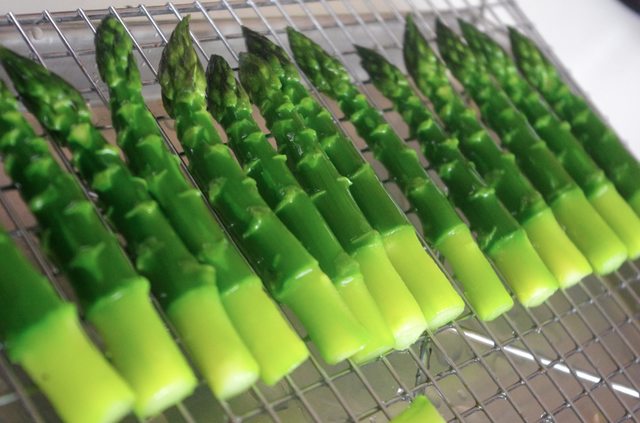
Check.
(albeit from yesteryear).
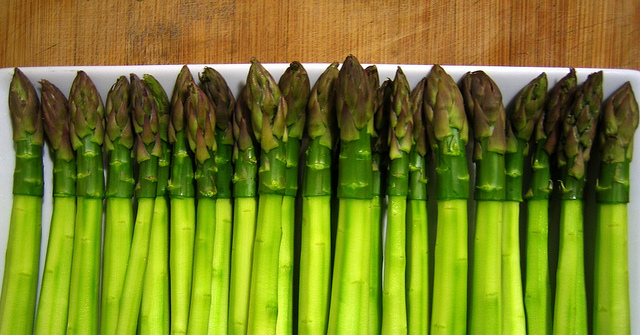
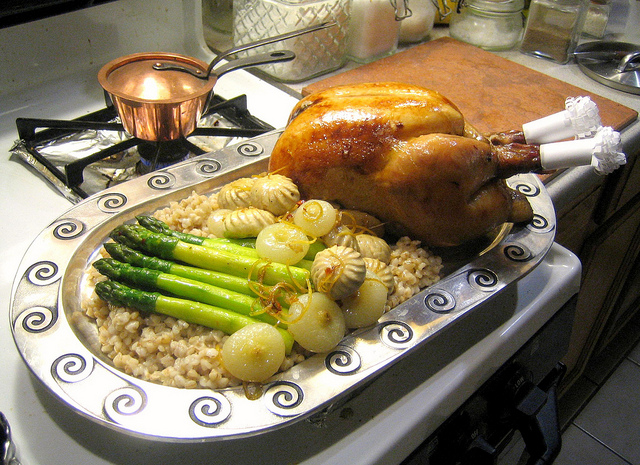
-
 6
6
-
-
-
-
Alose à l'étouffée.
Pocketbook shad, stuffed with sorrel, slowly baked for 10 hours in brandy.
Legend has it that the oxalic acid in sorrel and the addition of eau de vie melts the staggering multitude of wayward bones.
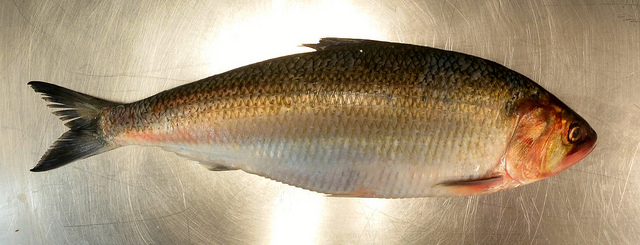
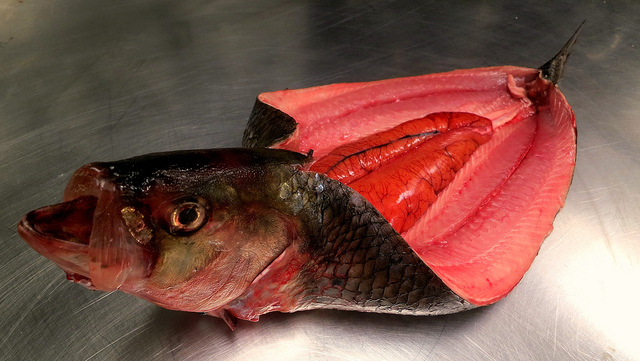
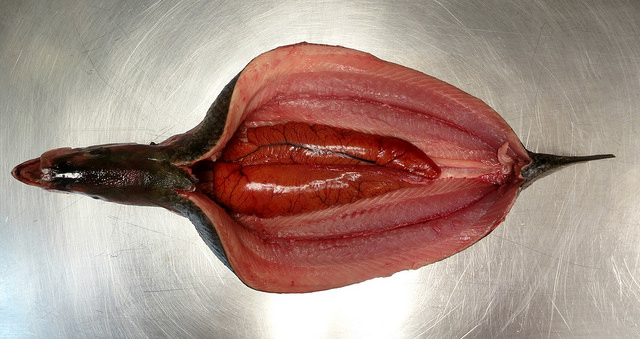
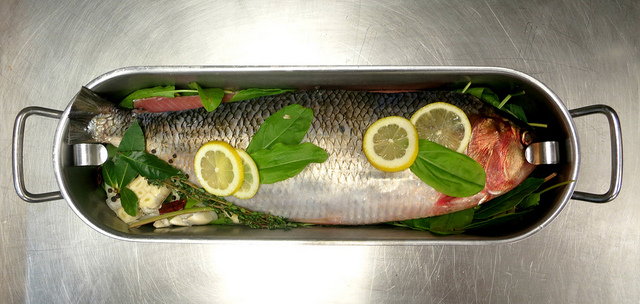

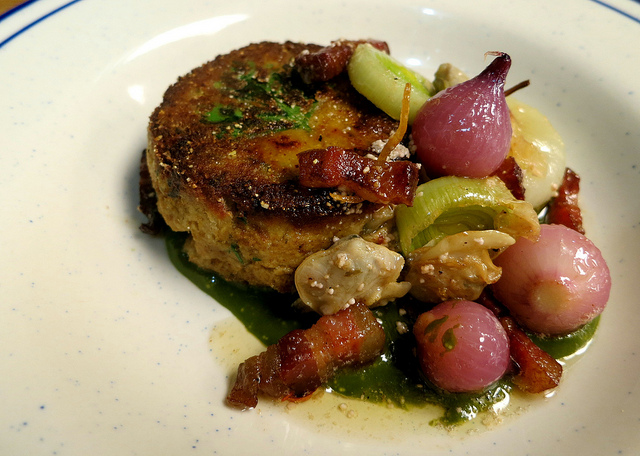
They garden & liquor cabinet variety folklore quackery did not work as advertised. The flesh was picked and made into fish cakes instead. Sorrel sauce, clams, lardons of smoked vetrèche, little onions and cured roe.
-
 2
2
-
-
-
Matjes. Brined then pickled young "virgin" herring. Some pickled onions and allspice.
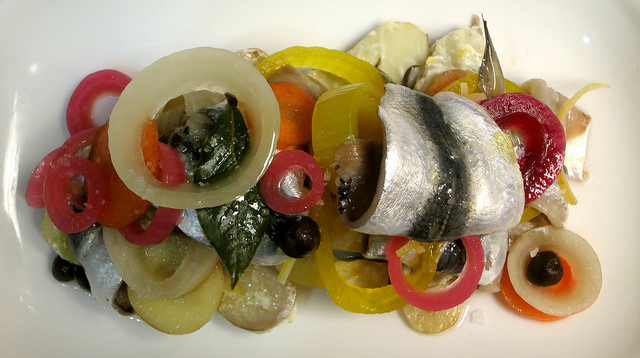
-
 4
4
-
-
Fresh Maine herring rollmops.
Butterflied, carefully, like anchovies.
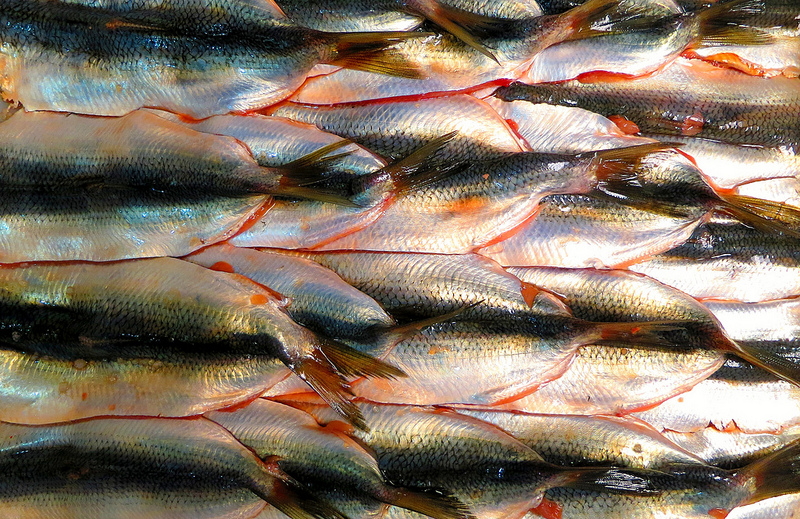
Resting with coarse sea salt overnight.

Bound around a pickle and cold pickled with aromatics.
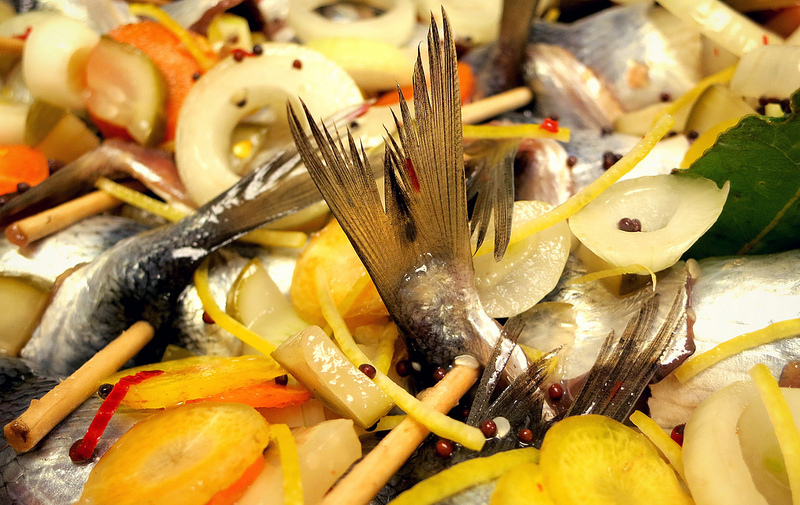
-
 3
3
-
-
Fish pie.
Swordfish, scallops and shrimp in savory pastry with pickles.
Diced, coarse and finely ground seafood with celery, onion, mushroom and leek matignon cooked in butter, bound with chowder and seasoned with white pepper and thyme. Pickled cauliflower, onions, peppers, mushroom and shrimp.

-
 2
2
-
-
Black Drum in Savory Pastry.
2 filets of black drum with a stuffing of scallop and shrimp in between.
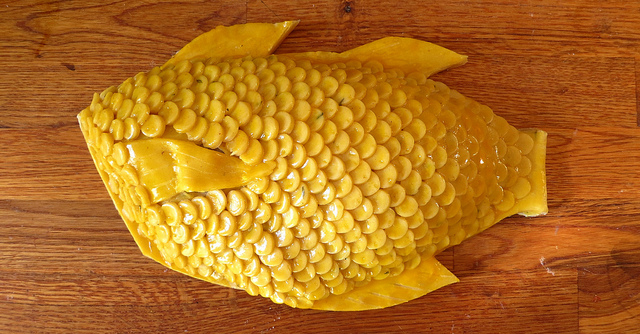

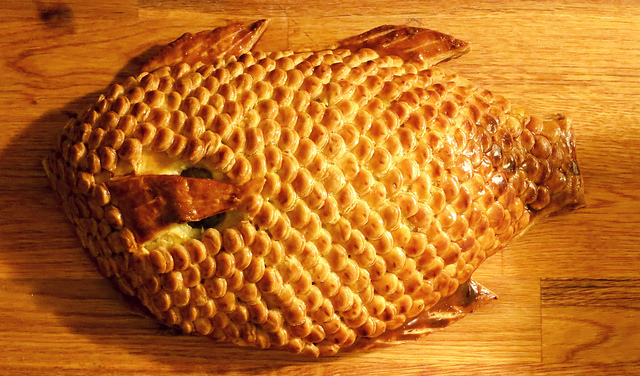
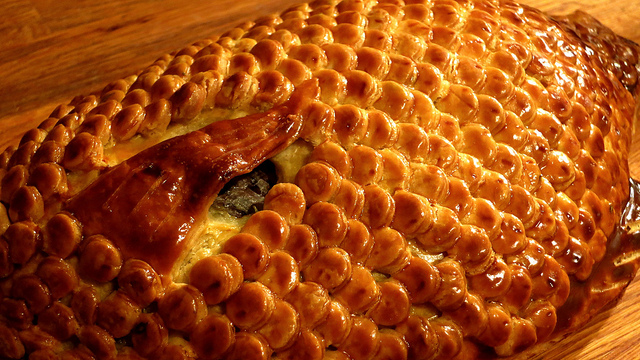
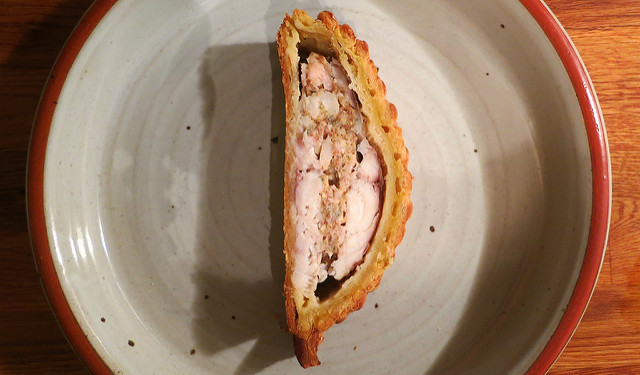
-
 14
14
-
-
So long as the meat and skin don't simmer above 180F the stock will stay clear and there is enough protein/collagen in the meat/skin to clarify the cooking liquid. Don't bother with the bones; they only take up valuable real estate in the pot. You can clarify with egg whites but even then the clarified liquid will not hold up at room temperature. Clarify with 20% egg whites (whisked with salt and a splash of vinegar) and added to the strained broth when it is at a warm temperature (too hot and the whites with coagulate before they have a chance to clarify). After that, add 5%-8% gelatin by weight of the aspic. It will be firm at room temp and slice easily.
You have every need to clarify like you are cooking in a Michelin starred restaurant. Egg whites, discipline and patience don't cost much.
-
 1
1
-
-
Fish Pie.
Scallops, shrimp and an inlay of monkfish.
Pickles of cauliflower, shrimp and a scallop.
Fancy mayo not pictured (J.O. mayo with bowfish roe)
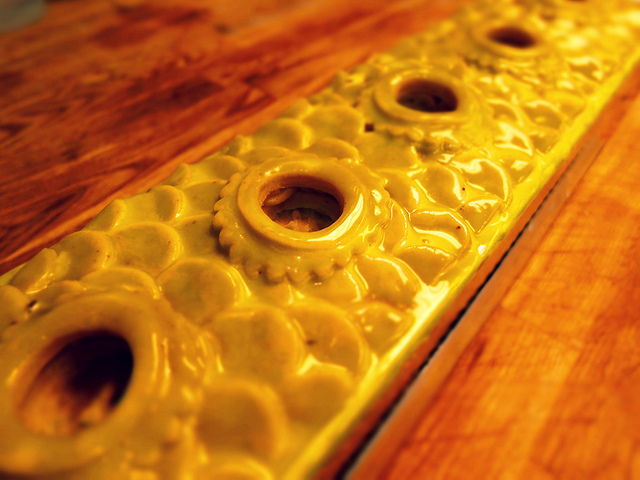

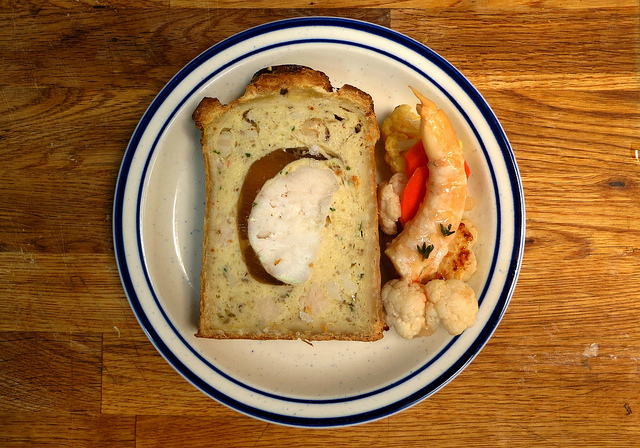
-
 4
4
-
-
Pocket-book Porgy. Stuffed with toasted bread and root vegetables.
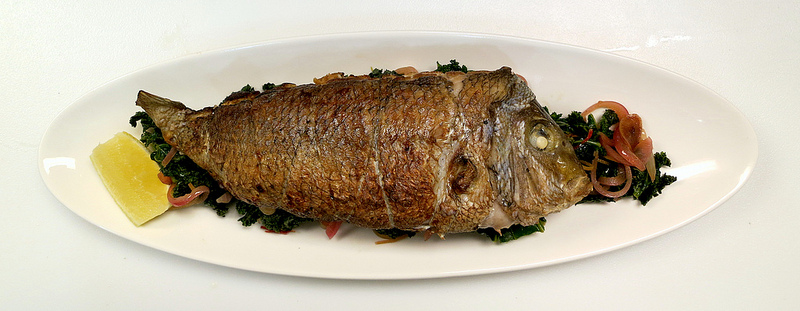
Boneless, stuffed through the back. On wilted fall greens with salted anchovy sofrito.
-
 1
1
-
-
Agreed. Simplify and focus on seasonality. A dish that tastes good will forever trump the idea of one. A tomato tastes fine just the way it is. Cubes, spheres, jellies and whatnot are gimmicky sleight of hand with too large of a window of error that are contrived and don't always taste good. Understand the fundamentals first. Get Culinary Artistry, a scale, notebook and formulate a menu that ushers in the fall. Turnip or squash soup to start. Veg, onion, butter, marjoram, water, sour cream, salt, done. Easy to plate. Garnish with some chopped toasted nuts or multi-grain croutons. Use a recipe and measure in grams by weight. Take notes and rectify as you see fit and have others taste.
Poach pears or apples in simple syrup with warm spices (replace the water with Riesling or decent port wine) and thicken with just a bit of corn starch (5% by weight of the syrup). Complement with a biscuit or simple lemon or chocolate cake.
-
 2
2
-
-
Consider curing the squab with 2 parts sea salt and 1 part cane sugar (and whatever spices you like). I grind the mixture finely and apply a modest amount. Let them dry out in the fridge for 2 days. The sugar keeps the salt from hardening the skin too much and allows for better caramelization.
The same works well for duck.
-
Pork and Squab Starship. Squab in squab inlay, wrapped in my ventrèche.
With bits of apricot, confit squab leg and my cured pork jowl.
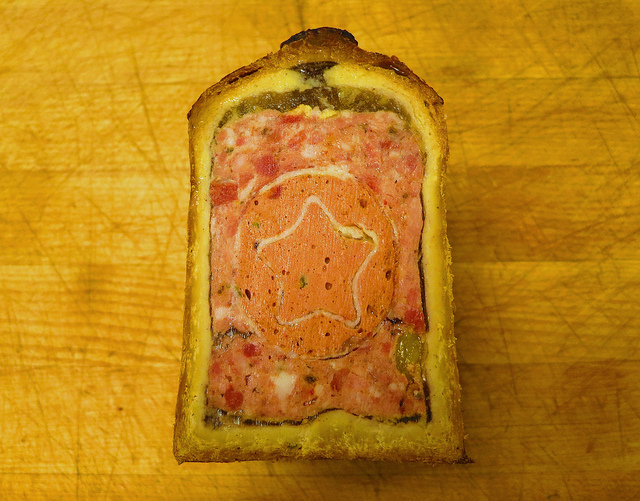 .
.-
 5
5
-
-
From the outside of the shoulder you should be able to separate the flatiron (paleron) and the mock tender (jumeau) on either side of the keel bone of the shoulder blade (scapula), though ideally the shoulder should have been cut behind the 5th rib (between 5 & 6). Both of those cuts are traditionally used for blanquette or Bourguignon. Underneath the scapula is the “underblade” which is very tender but needs to be cleaned of the sinew . Along the ribs and between the shoulder is what would be the Delmonico on a steer or coppa on a pig.
There may likely be all the meat between the shank and the shoulder and from there will be the bicep (ideal for pot au feu, plenty of collagen) and other muscles preferable for braising. The outside clod is suitable for tartar (very lean) whereas the heart of clod (tricep) will make a fine roast when carefully barded and diligently roasted.
Bovine Myology will help to identify the muscles.
http://bovine.unl.edu/eng/index.jsp
Bon courage.
-
Agribeef has taken the numbers out of context and done some misleading editing. 3oz of beef compared to 3oz of salmon is acceptable.
Comparing the calories in 3oz of beef to 40.5oz of salmon is not.
-
I came across the Agribeef website and despite my nutritional research have been unable to even come close to corroborating the claims they make when comparing the calorie count of beef to salmon (which I assume to be wild king salmon based on Agribeef's commitment to sustainability). I am flummoxed by the "zing" nutrient outside of a healthy regimen of late-night comedy show jokes.
"Beef contains powerful nutrients including zing, iron, protein and B-vitamins to help you lead a strong and healthy lifestyle. The zinc found in three ounces of lean beef is equivalent to 13.5 three-ounce servings of salmon, and the beef only has 154 calories as compared to 2,363 calories in the salmon."
Equal portion sizes of beef and salmon cooked in the same manner have 154 and 2,363 calories respectively? In my reality, wild salmon (even farm raised) has fewer calories, less saturated fat and less cholesterol than virtually all commercial beef cuts available including beef shin and 90% lean ground. Is this G. W. Bush flavored fuzzy math or deliberately misleading information and consumer fraud?
Agribeef also claims their beef is grass-fed (all cattle start their lives on pasture. This is unexceptional and misleading) as well as being grain finished. The cattle are apparently fed GMO corn, growth hormones, anti-biotics on their feedyards ("Cattle are provided with plenty of room so that they may roam, play, stretch out and lie down").
-
Jambon Sec.
Berkshire hams. Salt cured. Aitch bone removed.
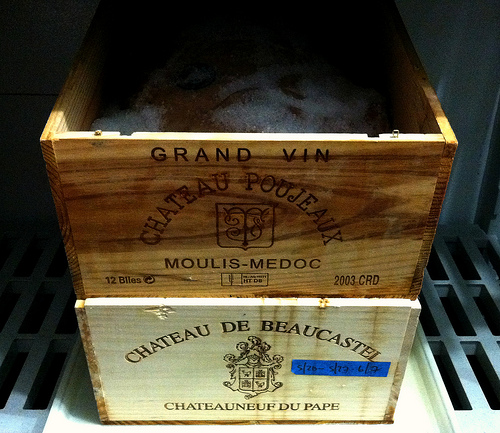
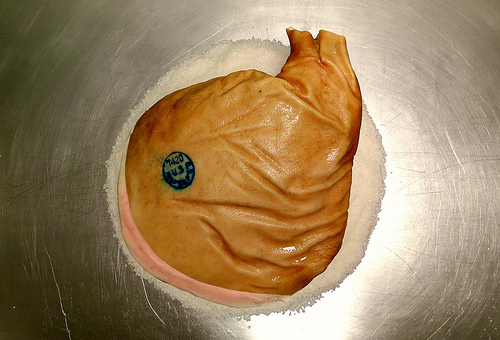

Rubbed with lard and spices.
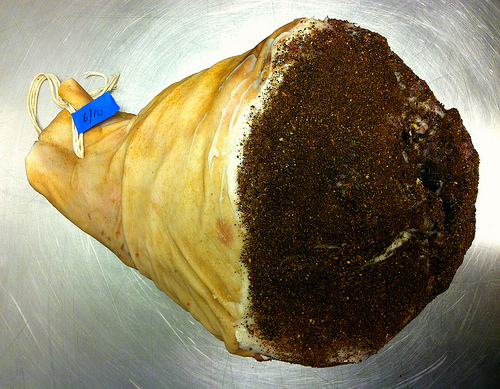
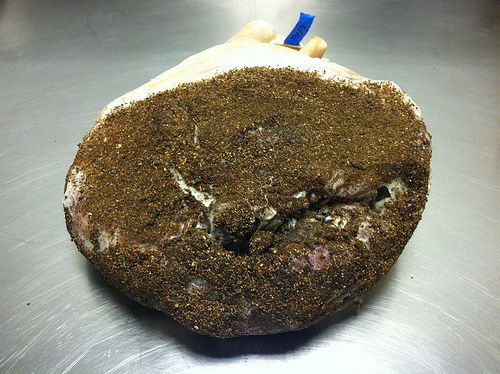
ETA winter/spring 2014.
-
 1
1
-
-
If the livers are bona fide “foie gras” livers, then you can proceed as one would for SV foie gras, though milk has a much different effect on the livers than port. The milk helps to bring the blood from the capillaries into the bigger veins and central artery making it easier to remove. Port on the other hand is a flavoring agent. Any bitterness is likely due to the bile and anything green (where the 2 larger lobes come together) needs to be removed. No need for any extra fat.
Consider soaking the livers in milk overnight in the refrigerator, pull out the next day and let the milk come to room temp with the livers in them, and devein with the back of a spoon so as not to cut through the veins. If you leave the veins in, it will make a mess later. You can marinate with salt, nitrite, spices, herbs, port and whatever overnight, cook as you see fit (I cook at 63C for 30 minutes), chill completely, then put in a food processor to homogenize and finally press through a tamis. If you do not blend the liver smooth, you will not get a smooth product and blending the livers with veins will a pain to get out of the tamis mesh.
If the livers are no more than ordinary goose livers, only larger than chicken liver, it is worth exploring the idea of a liver mousse or “farce à gratin”.
4 parts liver
4 parts shallot (supplemented by mushrooms or onions if you choose)
2 parts rendered goose fat
1 part booze
Clean the livers by removing the vein connecting the lobes and any green parts. Soak the livers in port or brandy overnight with nitrite and whatever aromatics (lemon zest, thyme, garlic, etc…). Drain the next day and save the alcohol. When the livers are dry, sear them in a small amount of goose fat over high heat, making sure to keep the livers pink inside and transfer to a shallow container. Add the shallots/mushrooms and sweat covered until absolutely tender with a pinch of salt. Remove the lid and cook dry, then add to the cooked livers. Deglaze the pan with the drained booze and reduce until almost dry. Add the remaining goose fat to melt down and add pour over the livers and veg. Chill until all is cold then purée in small amounts in a blender with salt and whatever seasonings. Pack in jars and cover with fat.
-
 1
1
-
-
Personally I am grateful for Max's contributions and they align well with my traditional Gallic sensibilities (blue lobsters are from around here anyway). My initial concern is more with purveyors' indiscretions rather than consumers since they are the ones responsible for bringing the items to market. I have received wholesale striped bass without tags which is illegal for commercial fishermen, purveyors and restaurants to possess or sell and American fishery laws must be respected in order to sustain the fisheries and the those whose livelihood depend on them. American fisheries are the best managed in the western hemisphere, for good reason, and there are bigger fish to fry.
-
 1
1
-





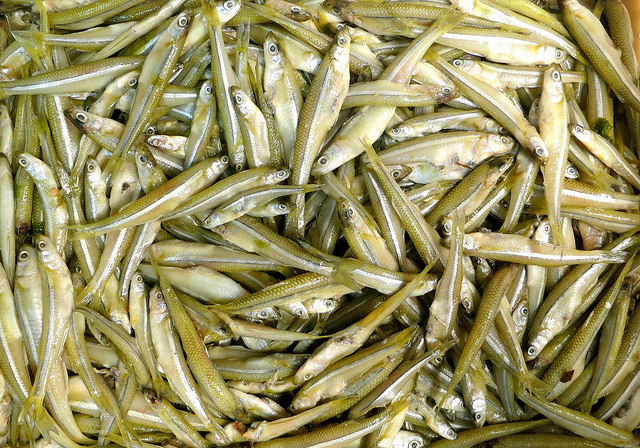
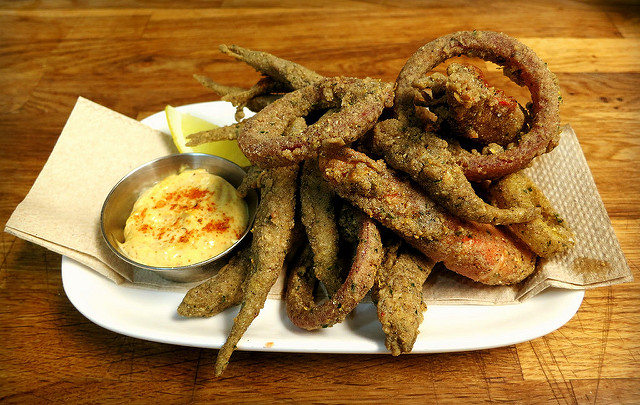
The Terrine Topic
in Cooking
Posted
Pâtés, en croûte
Pork with figs. Chicken liver, nettle, ventrèche and asparagus inlay. Bourbon aspic.
Game pie mold.